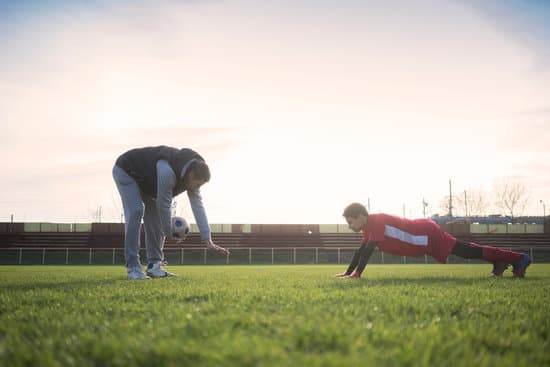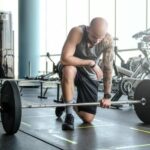As we age, our bodies undergo various changes that can impact our fitness levels and overall health. Adjusting your workout routine with age is crucial to ensure that you are meeting your body’s needs and maintaining a healthy lifestyle. Understanding how to modify your exercises, set realistic goals, and incorporate suitable activities based on your age is key to staying active and fit as you grow older.
It is important to recognize the changes in your body as you age, such as a slower metabolism, decreased muscle mass, and reduced flexibility. These factors can affect your ability to perform certain exercises and may require adjustments to your workout routine. By acknowledging these changes and adapting your fitness regimen accordingly, you can continue to challenge yourself while avoiding potential injury or strain.
Setting realistic fitness goals based on your age is essential for long-term success. Whether you are in your 20s or over 60, it is crucial to establish achievable objectives that take into account your current physical condition.
By tailoring your workout plan to suit your age group, you can effectively improve your strength, endurance, and overall well-being. Remember, age should not limit you from pursuing a healthy and active lifestyle – it should inspire you to find the best ways to care for yourself at every stage of life.
Understanding the Changes in Your Body With Age
As we age, our bodies undergo various changes that can impact our overall fitness levels and capabilities. Understanding these changes is crucial in adjusting your workout routine effectively. One of the key factors to consider is how your metabolism slows down with age.
This means that you may need to make modifications to your diet and exercise routine to maintain a healthy weight and energy levels. Incorporating more high-intensity workouts or strength training can help boost your metabolism and offset this natural decline.
Another important aspect to consider is the decrease in muscle mass that comes with aging. This loss of muscle mass can lead to reduced strength and mobility if not addressed through proper exercise. Focusing on strength training exercises that target different muscle groups can help maintain and even build muscle mass as you age.
Additionally, incorporating flexibility exercises into your routine is essential to counteract the decreased flexibility that often accompanies aging. Stretching regularly can improve range of motion, prevent injuries, and promote overall joint health.
Flexibility plays a vital role in maintaining mobility and preventing injuries as we grow older. Including exercises that improve flexibility such as yoga or Pilates can help counteract the stiffness that comes with aging. Moreover, focusing on balance exercises is essential for preventing falls, which become more common as we age.
By incorporating exercises like single-leg stands or stability ball exercises into your routine, you can improve your balance and reduce the risk of accidents. Adjusting your workout fitness routine with age involves understanding these changes in your body and taking proactive steps to address them through tailored exercises and activities.
Setting Realistic Fitness Goals Based on Your Age
Setting realistic fitness goals is a crucial component of adjusting your workout routine as you age. As our bodies go through natural changes over time, it becomes increasingly important to set achievable goals that consider these changes. Understanding your age and physical condition can help you tailor your fitness objectives to suit your individual needs.
One key aspect of setting realistic fitness goals based on your age is acknowledging the changes that occur in your body as you get older. Metabolism tends to slow down with age, making weight management more challenging. Additionally, muscle mass decreases and flexibility may diminish, affecting overall physical performance. By recognizing these changes, you can adjust your workout routine to focus on areas that need improvement and work towards maintaining a healthy balance.
When determining fitness goals based on your age, it is essential to consider what is attainable and sustainable for you at this stage in life. This may involve setting smaller milestones that lead to a larger objective or adapting exercises to accommodate any physical limitations or health concerns you may have.
By being mindful of where you are currently at in terms of fitness level and health status, you can create a workout routine that is both effective and safe for your age group.
| Benefit | Recommendation |
|---|---|
| Improved flexibility and balance | Incorporate yoga or tai chi into your routine. |
| Better bone health | Add weight-bearing exercises like squats or lunges. |
| Increased muscle strength | Incorporate resistance training with light weights or resistance bands. |
Choosing the Right Exercises for Your Age Group
As individuals age, it becomes increasingly important to choose the right exercises that cater to their specific age group. Understanding the changes in your body with age is crucial for selecting the most appropriate workout routine. For older adults, low-impact exercises are often recommended to prevent strain on joints and muscles. These exercises can include swimming, walking, cycling, or yoga. These activities help maintain cardiovascular health and overall well-being without putting excessive stress on the body.
On the other hand, younger individuals may benefit from more intense workouts that challenge their strength and endurance. High-intensity interval training (HIIT), weightlifting, and running are popular choices for those looking to boost their fitness levels. These exercises can help build muscle mass, improve cardiovascular fitness, and increase metabolism. However, it is essential for younger individuals to listen to their bodies and avoid overtraining to prevent injuries and burnout.
Customizing Your Workout Routine
Tailoring your workout routine based on your age group is key to achieving optimal results while minimizing the risk of injuries. Older adults should focus on activities that improve flexibility, balance, and mobility to support healthy aging. Incorporating stretching exercises, Tai Chi, or Pilates can help enhance flexibility and reduce the risk of falls. Additionally, strength training exercises using light weights or resistance bands can help maintain muscle mass and bone density.
Staying Active at Any Age
Regardless of age, staying active is essential for overall health and well-being. Incorporating a variety of exercises into your routine – such as cardio, strength training, flexibility, and balance exercises – can help you maintain a well-rounded fitness regimen.
It’s important to remember that adjusting your workout routine with age does not mean slowing down but rather adapting to meet your body’s changing needs. With the right mix of exercises tailored to your age group, you can enjoy improved health outcomes and vitality as you continue on your fitness journey.
Incorporating Strength Training for Bone Health
As we age, it becomes increasingly important to adjust our workout fitness routine to cater to the changing needs of our bodies. One key aspect that should not be overlooked is incorporating strength training for bone health.
Strength training not only helps to build and maintain muscle mass but also plays a crucial role in preserving bone density, which tends to decline with age. By engaging in regular strength training exercises, individuals can reduce the risk of osteoporosis and fractures, promoting overall bone health as they grow older.
One effective way to incorporate strength training for bone health is by focusing on weight-bearing exercises such as squats, lunges, and deadlifts. These exercises help to apply stress to the bones, stimulating them to become stronger and denser over time.
Additionally, resistance training using weights or resistance bands can target specific muscle groups while also benefiting bone health. It is essential to gradually increase the intensity of these exercises as your strength improves, ensuring a progressive overload that promotes bone remodeling and growth.
In a study published by the National Osteoporosis Foundation, researchers found that postmenopausal women who engaged in strength training twice a week saw significant improvements in bone mineral density at the spine and hip after one year. This highlights the positive impact that targeted strength training can have on bone health, especially for older adults at risk of osteoporosis.
By including strength training in your workout fitness routine with age, you can proactively safeguard your bones against age-related decline and maintain overall physical function and well-being.
| Benefit | Impact on Bone Health |
|---|---|
| Improved Bone Density | Strength training helps increase bone mass and reduce the risk of osteoporosis |
| Reduced Fracture Risk | Stronger bones are less prone to fractures due to falls or impact |
| Enhanced Physical Function | Better bone health leads to improved strength, balance, and mobility |
Adding Flexibility and Balance Exercises to Prevent Injuries
As we age, it becomes increasingly important to focus on exercises that enhance flexibility and balance in order to prevent injuries and maintain overall physical well-being. Flexibility exercises help improve the range of motion in joints, while balance exercises help strengthen stability and reduce the risk of falls. By incorporating these types of workouts into your fitness routine, you can better adapt to the changes in your body and maintain mobility as you grow older.
Benefits of Flexibility Exercises
Flexibility exercises, such as yoga or stretching routines, play a crucial role in maintaining joint health and muscle elasticity. As we age, our muscles tend to become tighter, which can lead to decreased flexibility and an increased risk of injuries. By regularly engaging in flexibility exercises, you can counteract these effects and improve your overall mobility. These exercises also help alleviate stiffness and tension in the muscles, leading to improved posture and a reduced likelihood of experiencing chronic pain.
Importance of Balance Training
Balance training is essential for individuals of all ages but becomes even more critical as we get older. Older adults are at a higher risk of falls due to factors like muscle weakness, decreased coordination, and impaired balance.
By incorporating balance exercises into your workout routine, such as practicing standing on one leg or using stability balls, you can strengthen the muscles involved in maintaining stability and prevent potential accidents. Improving your balance not only reduces the risk of falls but also enhances functional abilities for daily activities.
Incorporating flexibility and balance exercises does not only contribute to physical health but also mental well-being by enhancing focus, reducing stress levels, and promoting relaxation. It is essential to pay attention to these aspects as part of adjusting your workout fitness routine with age so that you can continue leading an active lifestyle while minimizing the risk of injuries.
Remember that listening to your body’s cues and gradually increasing the intensity of these exercises will help you stay strong, flexible, and balanced as you navigate through different stages of life.
Listening to Your Body and Adjusting Intensity
As we age, our bodies go through various changes that can impact our workout routines and overall fitness levels. It is important to listen to your body’s signals and adjust the intensity of your workouts accordingly to prevent injuries and ensure optimal performance. Here are some tips on how to adjust your workout fitness routine with age:
- Pay attention to any aches, pains, or discomfort during exercise. These could be signs of overtraining or muscle imbalances that need to be addressed.
- Modify the intensity, duration, or frequency of your workouts based on how you feel each day. Some days you may have more energy and stamina than others, so it’s essential to adapt accordingly.
- Consider incorporating more rest days into your routine to allow your body adequate time for recovery. Recovery is crucial for muscle repair and growth, especially as we age.
It’s also essential to understand that as we get older, our bodies may not recover as quickly from intense workouts compared to when we were younger. High-impact exercises like running or heavy lifting may put added stress on joints and muscles, making it important to find a balance in your workout routine.
- Opt for low-impact exercises like swimming, cycling, or walking to reduce strain on the joints while still getting a cardiovascular workout.
- Incorporate flexibility and mobility exercises like yoga or Pilates to improve range of motion and prevent stiffness that often accompanies aging.
- Work with a fitness trainer or physical therapist who can help tailor a workout plan specifically suited for your age group and physical condition.
By listening to your body’s cues and adjusting the intensity of your workouts accordingly, you can maintain an active lifestyle while minimizing the risk of injury and ensuring long-term fitness success. Don’t hesitate to seek professional advice if needed to create a sustainable workout routine that suits your age and fitness level.
Seeking Professional Advice
As you age, it becomes increasingly important to adjust your workout fitness routine to cater to your changing body and its needs. Seeking guidance from a professional can help you develop a personalized plan that takes into account your age, fitness level, and any potential health concerns. Here are some key reasons why consulting with a fitness trainer or healthcare professional can benefit your overall well-being:
- Expertise: Fitness trainers and healthcare professionals have the knowledge and expertise to understand how aging impacts the body and what type of exercises are most beneficial for each age group.
- Personalization: By working with a professional, you can receive a customized workout plan tailored to your specific needs, goals, and limitations. This individualized approach ensures that you are engaging in safe and effective exercises that support your overall health.
- Accountability: Having a professional to guide and monitor your progress can help keep you on track with your fitness goals. They can provide motivation, support, and feedback throughout your fitness journey.
In addition to providing expert guidance on exercise selection and intensity levels, a fitness trainer or healthcare professional can also help you prevent injuries, make modifications as needed, and ensure that you are maximizing the benefits of each workout session. Keep in mind that as you age, your body may require different types of exercises and recovery strategies compared to when you were younger.
By enlisting the help of a knowledgeable professional, you can navigate these changes with confidence and continue to enjoy an active and healthy lifestyle.
Lastly, remember that it’s never too late to start incorporating regular physical activity into your routine. Whether you’re in your 30s, 50s, or beyond, working with a fitness trainer or healthcare professional can help you adapt your workout routine to align with your age-related needs while promoting overall wellness. Take the first step towards adjusting your workout fitness routine by seeking expert advice today.
Conclusion
As we age, it is crucial to understand the changes that our bodies go through and adjust our workout fitness routine accordingly. The key to maintaining a healthy and active lifestyle as we grow older lies in adapting our exercises to meet the needs of our changing bodies. By acknowledging the shifts in metabolism, muscle mass, and flexibility that come with age, we can set realistic fitness goals that align with our physical condition.
Setting achievable objectives based on our age not only helps us stay motivated but also ensures that we are working towards optimal health. Choosing the right exercises for our age group is essential – whether it be low-impact options for older adults or more intense workouts for younger individuals. Incorporating strength training into our routine becomes crucial for bone health, as it aids in maintaining bone density and overall strength.
In addition to strength training, flexibility, and balance exercises play a vital role in preventing injuries and falls, especially as we get older. It is important to listen to our body’s signals during workouts and adjust the intensity accordingly to avoid overexertion or strain.
Seeking professional advice from a fitness trainer or healthcare professional can provide valuable insights into developing a personalized workout routine that caters to your age and fitness level. By taking proactive steps towards adjusting your workout fitness routine with age, you can embark on a journey towards a healthier lifestyle full of vitality and well-being.
Frequently Asked Questions
How Should My Workout Change as I Age?
As you age, it is important to adjust your workout routine to accommodate any physical limitations and changes in your body. Incorporating more low-impact exercises like swimming or yoga can be gentler on joints. Focus on strength training to maintain muscle mass and bone density.
How Do I Work Out My Fitness Age?
Calculating your fitness age involves assessing various factors like cardiovascular fitness, strength, flexibility, and body composition. Fitness age is often influenced by lifestyle habits like diet and exercise frequency. You can work out your fitness age through online calculators or fitness tests.
How Do You Adapt to Exercise for Older Adults?
Adapting exercise for older adults requires considering any existing health conditions or physical limitations. It’s crucial to prioritize safety by starting with low-impact activities and gradually increasing intensity. Including balance exercises can help prevent falls, while flexibility exercises can improve range of motion. Additionally, working with a trainer experienced in senior fitness can provide tailored guidance and support.

Passionate about providing useful information to anyone with an interest in the field of Personal Training, I strive to pass on to our readers quality information and to answer any questions about Personal Trainers, the work they do and how to become one.





